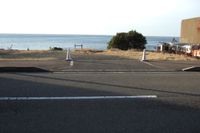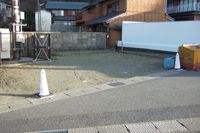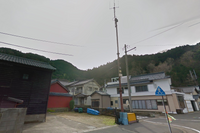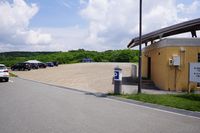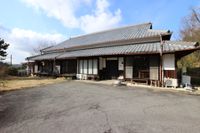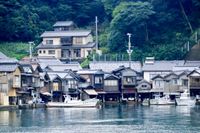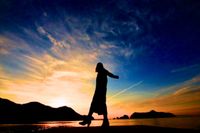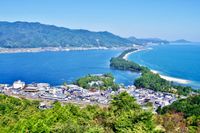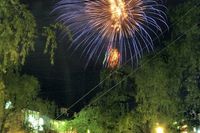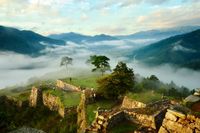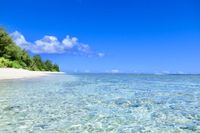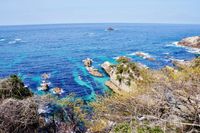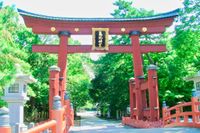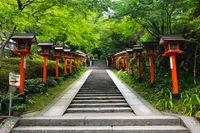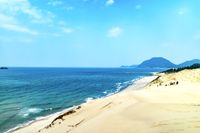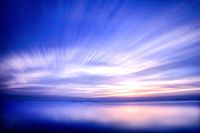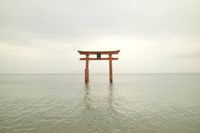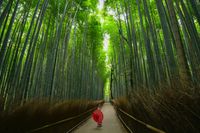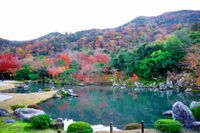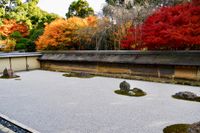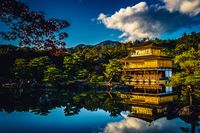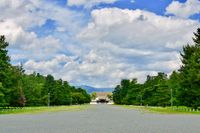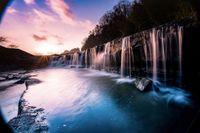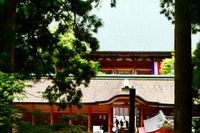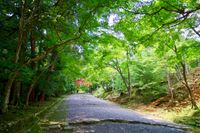1,100 JPY 〜/24 hours
5.00

38
1/4
2/4
3/4
4/4
Ukawa Onsen Yoshino no Sato
Kyoto/Kyuso, Tango-cho, Kyotango City
1,100 JPY 〜/1 night
5.00 (1)
Description
It is a natural hot spring parking lot located in the northernmost part of Kyoto. It is located on a small hill, so you can see the whole Sea of Japan. You can take a hot spring on the mountain side and a hot spring on the sea side every day. On the mountain side, you can enjoy the sound of greenery, and on the sea side, you can enjoy the superb view of the Sea of Japan. Heal your mind and body with the natural hot spring.
Inquire about a camping station or its booking requirements up-front
Contact a HostBasic Facilities
24h Toilet
Water
WiFi
Playground
Pets Allowed
Smoking Area
Vending Machine
Washing Dryer
Waste Water Discharge
Security Cameras
EV Charger Stand
Administrator
Additional Fee Facilities
Electricity socket
Not available
Non-free Wifi
Not available
Non-free Shower
Not available
Onsen (Adult)
¥600/person
Onsen (Child)
¥400/person
Dustbin
Not available
Dog Park
Not available
Camping Behavior Allowed
Not available
Tent (For 2-3 people)
Not available
Tent (For 4-5 people)
Not available
Cooking Allowed
Not available
BBQ Facilities Rental
Not available
Bonfire Allowed
Not available
Nearby Facilities
Convenient Store
Not available
Supermarket
Not available
Gasoline
コスモ石油 松本石油 (1300m)
Restaurant
海鮮創作料理高嶋 (0m)
24h Toilet
Not available
Onsen
宇川温泉 よし野の里 (0m)
Parking space
Maximum lots:0 lot(s)
Parking Area Size:Length 5.5m・Breadth 2.3m・Height 制限なし
Note
Cancellation Deadline
17:00, 2 days before (Japanese time)
If you cancel your reservation after the Cancellation Deadline, cancellation fee will be applied. Cancellation rate can be checked here
Availability status
Please click a date to see the availability of car
Sun | Mon | Tue | Wed | Thu | Fri | Sat |
|---|---|---|---|---|---|---|
30 | 1 | 2 | 3 | 4 | 5 | 6 |
7 | 8 | 9 | 10 | 11 | 12 | 13 |
14 | 15 | 16 | 17 | 18 | 19 | 20 |
21 | 22 | 23 | 24 | 25 | 26 | 27 |
28 | 29 | 30 | 31 | 1 | 2 | 3 |
Sun | Mon | Tue | Wed | Thu | Fri | Sat |
|---|---|---|---|---|---|---|
28 | 29 | 30 | 31 | 1 | 2 | 3 |
4 | 5 | 6 | 7 | 8 | 9 | 10 |
11 | 12 | 13 | 14 | 15 | 16 | 17 |
18 | 19 | 20 | 21 | 22 | 23 | 24 |
25 | 26 | 27 | 28 | 29 | 30 | 31 |
Reviews
5.00(1 reviews)

菅原恵利
5.00Sun, November 24, 2019
すごく良いところでした。温泉も良かったです。24時間使えるトイレは綺麗で、周りは宿の宿泊客の車がパラパラ停まっているだけなので静かでした。ボイラー室?が駐車スペースの傍にあり、もしかしたら深夜3時ごろスイッチが入る音がうるさいかもしれないと言われましたが、そういえば全く気にならなかったです。たしかに日中も機械が稼働してる間は少しゴーと音がしてます。車のドアを閉めたらそんなに聞こえません。人が多いような道の駅よりは全然静かです。晴れて明るい時間は遠くに青い海も見えます。行きたかった観光地の「伊根の舟屋」が近くて良かったです。また行きます!
Translate To English
1,100 JPY 〜/1 night
5.00 (1)
Reservation Deadline Time : On that day 1 hour ago
Check In
Check Out
Nearby Car Night Spots
Nearby Activities
There is no nearby activities
Ranking Stations
(Bonfire BBQ) Chita Mihama Noma Beach Station
¥3,500〜
/ per nightAichi Noma, Mihamacho, Chita County
4.7
(42)Vanlife BASE | 45 min. from Narita Airport / Perfect for campervan travel/A seaside town rich in nature/Japanese countryside town/welcome traveler
¥7,000〜
/ per nightChiba Koseki, Kujukuri-machi, Sambu-gun
5.0
(61)Shin Meishin Suzuka PA (inbound) RV Station Suzuka * With Power!
¥2,200〜
/ per nightMie Yamamotocho, Suzuka-shi
4.3
(156)Nearby Drive Spots
Ine no Funaya Houses
This is a type of traditional unique to the area, in Kyoto Ine Town. The building consists of a ship storeroom with living quarters above. The first floor has a ship warehouse as well as a storeroom and workship, with a living room on the second floor. It is thought that there are around 200 of these arbor shops in existence from the Edo era(1603-1868).
Yuhigaura Beach
This is a bay area in the northern area of Kyoto, facing the Japan Sea. This is an ideal photo spot with its sunning sunset views. Visitors can also enjoy snorkeling in the shallow beach, for which the area is popular.
Amanohashidate
This is a 3.6 km sand dune that separates Miyazu Bay and Aso Sea from north to south and is one of the three major scenic spots in Japan. Over thousands of years, around 8,000 pine trees have grown here, and creates a mysterious landscape on the eastern side with the white sand scape. It is also said that if you bend down and look between your legs, the landscape will resemble a dragon rising up to the sky.
Kinosaki Onsen
This is an old hot spring in the northern part of Hyogo prefecture. The onsen opened 1300 years ago. It has been consistently been recorded as a highly ranked and regarded onsen. During the Meiji era(1868-1912), it was a place of healing for wounded soldiers during the Russo-Japanese war, and was also the setting for Shiga Naoya's "Kinosaki nite". It is a popular destination for those visiting the 7 hot springs along Otani River, and the willows trees along the river make for a magical landscape.
Takeda Castle Ruins
These are the remains of the Takeda castle built by Yamana Sozen in 1431. The castle fell during the Tanba district attack of Toyotomi Hideyoshi during the "Battle of Takeda Castle" and was destroyed completely during the battle of Sekigahara. The castle was originally built at the top of Mount Koga, and due to its geographical location and stunning views, would often be shrouded in clouds, giving it the name of the "Heaven castle" or "Japan's Machu Picchu".
Mizushima Island
This is a small uninhabited island at the tip of Tsuruga Peninsula. The area is surrounded by shallow beaches and rock formations, and due to the beauty of the clear waters, it is known as the "Hawaii of Hokuriku". The island is only accessible during the 2 month period from Mid July until the end of August.
Uradome Beach
This is a 15km stretch of Ria type coastline along the norther Tottori prefecture area. There are various cliffs, rock and cave formations, with various sea birds inhabiting the area. It is also known as the "Matsushima of the Sanin area" as the area is said to resemble Matsushima in Miyagi prefecture. There is also a beach area which attracts visitors looking to enjoy beach and water activities.
Kehi Jingu Shrine
This is a shrine which was founded by the Empress Jingu in 199 AD. The shrine deity was enshrined by Izasawake no kami, Emperor Chuai, and Empress Jingu. Four companies named Yamato Takeru No Mikoto Emperor OjinToyotama-himeTakeshiuchi no Sukune are also enshrined here. It is an entrance from Hokuriku to Kinai, and since it is a key gateway to Korea and China, it was regarded as "Hokurikudo general guardianship" and was held in high importance. It also has one of the three largest Torii gates in Japan.
Kifune Shrine
This is the head shrine of the Kifune Shrine group, of which there are around 450 in Japan, although the construction date is unknown. The main shrine God was historically known as a rain God named "Takaokami no Kami", and worshipped as a bringer of rain and bountifulness. It is also said that drawings of horses were made on wood here, giving birth to the "Ema" which are the wooden plaques that one can see at many shrines with prayers written on them. Around 300 meters away from the main hall, one can visit "Yui Shrine", where there is another God that is said to bring destined couples together, known as Iwanagahime no Mikoto. The area is popular amongst couples.
Tottori Sand Dunes
This is a 16km coastal sand dune, the largest in Japan, situated in Tottori prefecture. The three sand dunes are lined more or less in parallel with the Japan Sea, and the second middle sand dune, known as "the horse's back" is the most famous photo spot. The area is also popular for paragliders, hangglidesr and sand boats.
Lake Biwa
This is a lake with the largest reservoir capacity in Shiga prefecture. It is said that the lake formed from around 4,000,000 to 6,000,000 years ago and provided a water supply to those that lived in the area from the Jomon period. The name comes from the fact that the shape of the lake resembles a Japanese musical instrument known as the Biwa.
Shirahige Shrine
This is a shrine that is said to have been built in 5 BC. The shrine God is known as Sarutahiko no Mikoto, with the red/orange Torii gates appearing to float in Lake Biwa, which is known as "Itsukushima Shrine of Omi". It is a particularly good photo spot for photographers. The Torii gates were originally on dry land, but it is said that due to the increasing water levels of the lake, the Torii gates ended up being in the lake area.
Arashiyama Bamboo Grove
This is a bamboo forest of around 400m in Sagano. This was an area opened by aristocrats and noblemen in the Heian era(794-1185), and this area loved by the upper echelons of society back then still exists today, around 1,000 years later. This symbol of Kyoto brings in many tourists. It is recommended that you visit in early morning or later evening to be able to enjoy at leisure.
Tenryu-ji Temple
This is a temple built under the instruction of Ashikaga Takauji in 1345, and is a branch temple of Rinzai Tenryu-ji sect head temple. It was built as a place of relaxation for Emperor Godaigo. The main object of worship is Shaka Nyorai, and is registered as a world heritage site. The area is also popular for autumn leaf viewing, as there are amazing views of the Arashiyama autumn leaf trees.
Ryoanji Temple
This is a Rinzai sect temple built by Hosokawa Katsumoto in 1450. The main object of faith is Shaka Nyorai, and is registered as World Heritage Site. The famous stone water garden known as "Karesansui Garden" is said to represent a Zen landscape, and is arranged such that one cannot see all 15 stones at the same time. The area became famous when UK's Queen Elizabeth II visited here in 1975.
Kinkakuji Temple(Golden Pavilion)
This is a Rinzai sect temple built by Ashikaga Yoshimitsu in 1397. Kannon Bosatsu is the main object of worship, and is registered as a World Heritage Site. The golden Shariden temple known as "Kinkaku" in the centre of the Garden is said to represent paradise in this world. In the Kyoko-chi Pond, there are several stone islands known as Ashihara-jima islandTsurushima islandKameshima island dedicated to the feudal lords who served Ashikaga Yoshimitsu, the Shogun whose home the temple was. Along with Ginkakuji Temple(Silver Pavilion), these two temples are the great symbols of the Muromachi era(1336-1573).
Kyoto Imperial Palace
For 500 years between 1392 and 1869, the various generations of emperors lived here, where public ceremonies were held and administration took place. Originally, the place began as a small hall known as "Tsuchimikado Higashi no Toindono", but was expanded by Ashikaga Yoshimitsu, an important Shogun in Japanese history. It was established by Oda Nobunaga and Hideyoshi Toyotomi, to become the place as it is seen today. It ended as a place of government when the Emperor Meiji and royal family moved to Tokyo in 1869, and became open to the public from August 2016.
Kurotaki Falls
This is a waterfall that runs down the Mino River. With a height of 4 meters and a width of 30 meters, the waterfall has two stages, and the area is ideal for photography particularly due to the early morning glow. The area has also been a setting for various traditional folk stories and plays.※兵庫県 黒滝の朝 © Tomato_249 クリエイティブコモンズライセンス(表示4.0 国際)https://creativecommons.org/licenses/by/4.0/
Mount Hiei Enryakuji Temple
This is a temple of Tendai that was founded by Saicho in 788 AD. It is also registered as a World Heritage Site. Along with Mount Koya Kongobuji Temple, it became the centre for Heian Buddhism and a place of training for figures such as Honen (founder of the Jodo sect), Shinran (founder of the Jodoshin sect), Eisai(Founder of the Rinzai sect), Dogen (founder of the Soto Sect), Nichiren (Founder of Nichiren Sect). Because of this it is also known as the "Mother Mountain of Japanese Buddhism" and sacred buddhist teachings still continue to this day.
Hiyoshi Taisha Shrine
This is a shrine built in 91 BC. The western hall contains the main powerful God with the eastern hall contains the Mount Hiei guardian God. This is the main hub shrine of the 3,800 Hiyoshi, Hie and Sannno Shrines in Japan. There are numerous cultural items associated with monkeys, as they are considered as underlings to the shrine Gods. The area is also famous for autumn leaf viewing with around 3000 autumn leaf trees.






